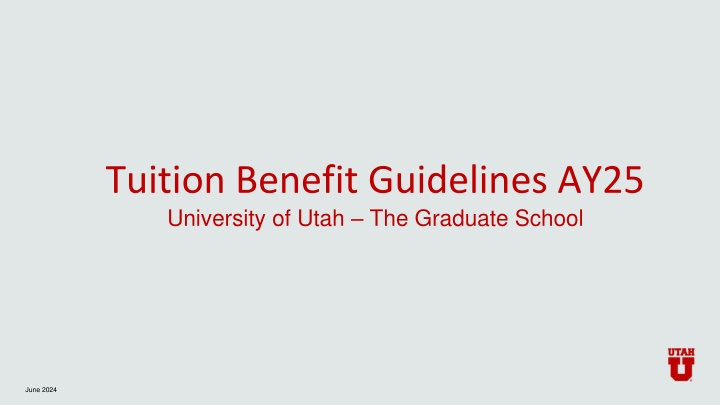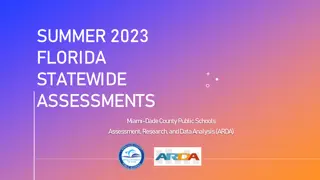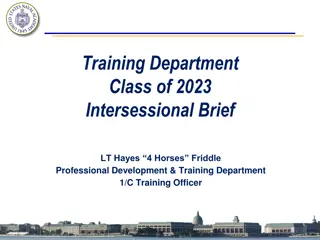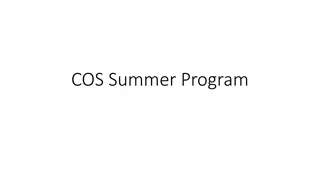
University of Utah Tuition Benefit Guidelines Updates AY25
Stay informed about the updated tuition benefit guidelines for Academic Year 2025 at University of Utah's Graduate School. Learn about the revised tuition support types, waiver system changes, and more to ensure you make the most of the available benefits.
Download Presentation

Please find below an Image/Link to download the presentation.
The content on the website is provided AS IS for your information and personal use only. It may not be sold, licensed, or shared on other websites without obtaining consent from the author. If you encounter any issues during the download, it is possible that the publisher has removed the file from their server.
You are allowed to download the files provided on this website for personal or commercial use, subject to the condition that they are used lawfully. All files are the property of their respective owners.
The content on the website is provided AS IS for your information and personal use only. It may not be sold, licensed, or shared on other websites without obtaining consent from the author.
E N D
Presentation Transcript
Tuition Benefit Guidelines AY25 University of Utah The Graduate School June 2024
Contents Updates to the Tuition Benefit Guidelines Tuition Benefit Structure Tuition Benefit Types Updated Support Types The Waiver System Removed/Updated Rules Academic Year Credit Hour limit Adjustment Reviewing the Updated Entry Process Previewing Planned Updated Reports
Tuition Benefit Types Waived Tuition Benefits (WTB): tuition being written off by the University, representing reduced tuition revenue; this includes resident tuition & mandatory fees, and the nonresident waiver where applicable. Sponsored Tuition Benefits (STB): reduction of tuition by way of billing resident tuition and mandatory fees to a sponsoring funding source, which includes research grants, faculty startup packages, donor funds, department discretionary funds, returned F&A, etc.; the University will waive the nonresident waiver where applicable.
Tuition Benefit Structure Tuition Benefit Program Sponsored Tuition Benefits Waived Tuition Benefits Resident tuition charged to a chartfield (research grants, faculty startup packages, etc.) Individual student waivers provided to each college RAs billed to F&A (not charged to a chartfield)
Revising Tuition Support Types Research assistants RA (GR will be retired) Teaching assistants TA (GT will be retired) Graduate fellows GF Traineeships TR (this is new, separating fellows from trainees) New graduate assistant job code for non-TBP supported TAs & RAs: 1632
Switch to Waiver System Eliminate dollar-based allocations these are hard for programs and colleges to balance in relation to student need, they can be restrictive of student enrollments Waivers streamline TBP calculations: 1 student = 1 waiver Waivers will cover up to 12 graduate credits (and as little as 3 credits of thesis or dissertation) Waived Tuition Benefits (WTB) covers TAs, RAs with payroll on activities, GFs, and TRs Additionally, we are eliminating fractional benefits (50% and 75% TB)
AY25 Waivers Projections are based on the number of students served for AY24 Similar to allocations, waivers are a college resource that is distributed between programs at the dean of the college s discretion Final budgets/waiver counts are under review at this time. We are working with the budget office to confirm that information and once it is set, that will be shared with college deans to determine individual department distribution.
Removing Restrictive Rules The following rules will be eliminated from TBP at-large; however, college leadership will have the opportunity to determine college-specific rules for TBP usage. Will now follow Office of the Registrar definitions of full-time enrollment 84 credit hour rule for RAs will be eliminated First degree restriction eliminated Semester limits eliminated
Increase to 30 Credits AY Move from coverage of 24 graduate credits AY to 30 graduate credits AY (12 credits fall | 12 credits spring | 6 credits summer) Change will allow for students to maximize enrollment each semester and be able to utilize summer may help enable students to complete their programs on a more efficient timeline Please note: Office of the Registrar policy notes that students who are on campus and utilizing University facilities during the summer should be enrolled in courses
NOTE Everything in the following slides is still under development. What we are showing today includes the desired end-goal for the new entry process and reports. However, some elements of the following may be subject to change. We appreciate your flexibility at this time, and we will be sure to inform coordinators of any process changes from this desired outcome as UIT finalizes production.
Whats new here? Allocation information has been changed to Waiver information Waiver information will be shown by term Remaining waivers will be shown clearly for ease of use Entry information has been updated to include the new support types and whether a student is marked as Waived or Sponsored The New Entry Portal Landing Page
Whats new here? Minimum support amount is removed as all students will have the same requirements for 100% TB Support types have been updated to reflect changes XTBP entry has been updated to reflect new wording for Sponsored Tuition Benefit Both GSHIP and Sponsored tuition benefit options have added wording for clarity The option to designate RA students with payroll on grants to have their resident tuition and mandatory fees charged to F&A returned overhead instead of using a waiver. The New Entry Portal Entry Page
Entry Process Timeline Portal entry will remain at 6 weeks prior to the first day of courses. Portal closure will remain the day of Census GSHIP enrollment will still occur as rapidly as possible after TB entry (students must still meet all requirements for GSHIP enrollment for me to complete the process- minimum enrollment requirement, signed TB agreement, assistant support type, marked for GSHIP during TB entry) The email students receive prompting them to sign their TB agreement will be automatically sent overnight (up to 24 hours after entry). This change is put in place to allow time for coordinators to make edits/deletions prior to the email, preventing students from receiving confusing/incorrect information. (Students can still manually sign their TB agreement without the email via their student homepage). Tuition Benefit will still disburse approximately 1 week prior to the first day of courses.
NOTE - Reminder Everything in the following slides is still under development. What we are showing today includes the desired end-goal for the new entry process and reports. However, some elements of the following may be subject to change or will be delivered in multiple stages over the next year.
Planned/Requested Updates for the Reports More clear information regarding tuition coverage, especially for Sponsored tuition benefit which is charged to provided chartfields or F&A returned overhead. More clear enrollment data for students, including breaking down uncovered (undergraduate) credits. Semesters of TB usage outlined for department review. Annual information, updated as the year progresses for better use in department decision making and future planning.
GSHIP A Quick Note We are under a new contract for AY25 United Healthcare Student Resources will remain our medical insurer Plan currently sitting with the Utah Insurance Department We ll have our typical annual materials to share in due course, but those have not yet been provided to us Premium costs will increase by ~1.3% New plan feature: Tiered Prescription benefit No more submitting reimbursements manually!
Summer Enrollment & TB Is summer enrollment required now? No, summer enrollment is not required in a general sense. Our increase from 24 credits of coverage in an academic year to 30 credits of coverage is an effort to make summer tuition benefit support more possible for students/departments.
Summer Enrollment & TB Do students who are working during the summer need to be enrolled? This is not a Graduate School policy, but an Office of the Registrar rule. The policy states that students who are utilizing university resources during any given semester (summer included), which includes faculty/PI time for student projects and milestones, need to be enrolled/paying tuition as appropriate. An important question to ask is While doing this work, is the individual acting as a student? An employee? Both?
Annualized Requirement? What is the annualized requirement that is shown on the minimum support levels? Do students need to be supported all year round now? No, students do not need to be supported all year round. Your department can still enact its own discretion when selecting which semesters a student is on tuition benefit. The annualized amount shown on the website is a summation of the minimum support levels for the academic year (shown as both 9 months of support and a full 12 months of support). This is purely a resource to help your department know an expected cost for salary wages/fellowship support that is required over the entire academic year, should you be supporting a student during that entire time.
Differentials? Will differentials be shown in TB reports? That is a suggestion we are still reviewing at this time. While we want to include as much helpful information in the reports as we possibly can, we also don t want to introduce unclear or confusing data points. Since differential tuition is not covered by tuition benefit, including it in our report data may create some additional confusion. As such, we are unsure if there is a way to effectively include it in the report data at this time. This conversation will be ongoing with UIT as we move forward.
GF and GSHIP? Are GF/TR students GSHIP eligible now? No, these students are still not eligible for GSHIP enrollment via tuition benefit. However, you can still consider covering them via department paid insurance.
Traineeships and job codes? Is there a job code for the TR designation? No, these students are not set up via payroll. Their support is instead disbursed via AP monthly stipends. As such, there will be no associated job code.
Q&A Dates Wednesday, June 26, 10-11:30am Tuesday, July 2, 10-11:30am Thursday, July 18, 1-2:30pm Wednesday, August 7, 10-11:30am Wednesday, August 14, 2-3:30pm A video version of this presentation will be available online for review. Our intention is to have that uploaded by the end of this week.
Questions/Contact Matthew Plooster, EdD Office of Fellowships & Benefits The Graduate School 801-581-6020 matthew.plooster@utah.edu LoGan Gowers Office of Fellowships & Benefits The Graduate School 801-585-1372 L.Gowers@utah.edu Terrie Parker Director, Accounting & Finance The Graduate School 801-585-6213 terrie.parker@utah.edu tuitionbenefit@gradschool.utah.edu gradschool.utah.edu/funding/tbp






















